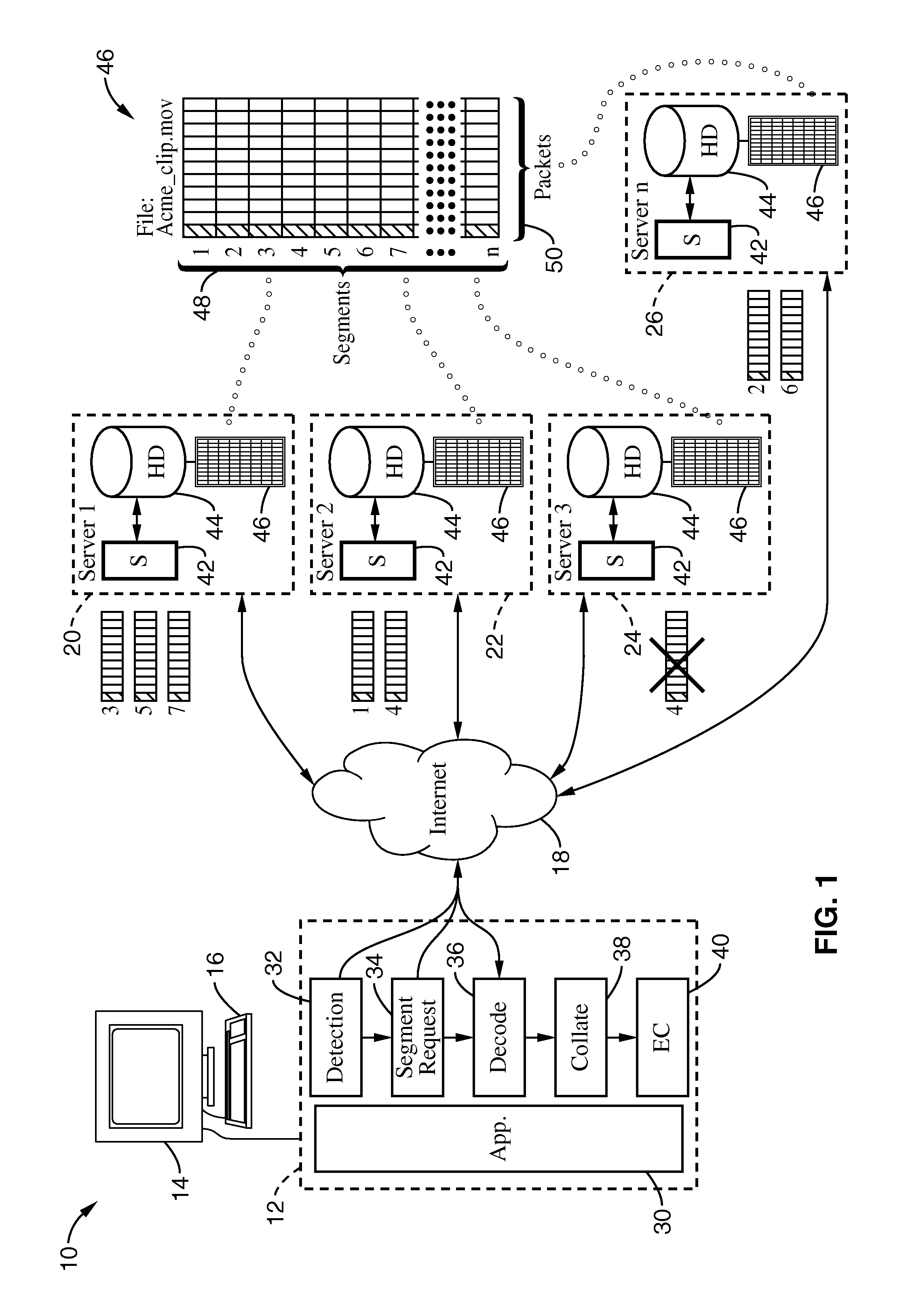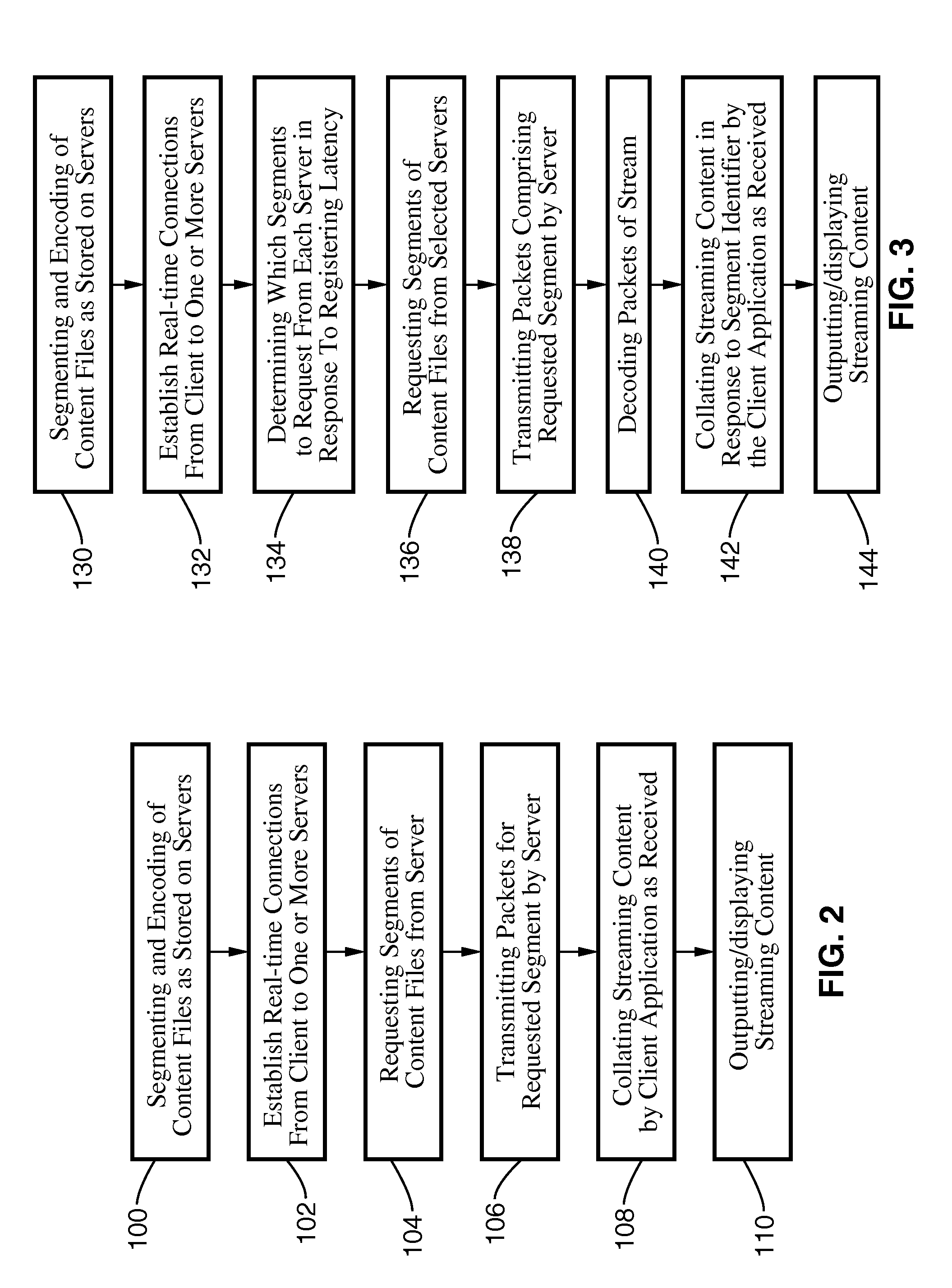Apparatus and method for peer-to-peer streaming
a peer-to-peer streaming and peer-to-peer technology, applied in the field of peer-to-peer streaming media, can solve the problems of increasing the latency of initial playback, still involving a substantial amount, and largely indeterminate, so as to improve the streaming reliability of internet links and improve the streaming performance in home networks
- Summary
- Abstract
- Description
- Claims
- Application Information
AI Technical Summary
Benefits of technology
Problems solved by technology
Method used
Image
Examples
Embodiment Construction
[0068]Referring more specifically to the drawings, for illustrative purposes the present invention is embodied in the apparatus generally shown in FIG. 1 through FIG. 6. It will be appreciated that the apparatus may vary as to configuration and as to details of the parts, and that the method may vary as to the specific steps and sequence, without departing from the basic concepts as disclosed herein.
[0069]The system and method described herein, when implemented across peers operating over the Internet, or similar wide-area network, allows for real-time streaming transport of media content elements.
[0070]FIG. 1 illustrates a streaming system embodiment 10 according to an embodiment of the present invention. Preferably the system is implemented over a peer-to-peer network in which the devices can be either clients or servers, although it can be implemented with one or more fixed clients or servers. As the system is particularly well-suited for use in the peer-to-peer environment, the ...
PUM
 Login to View More
Login to View More Abstract
Description
Claims
Application Information
 Login to View More
Login to View More - R&D
- Intellectual Property
- Life Sciences
- Materials
- Tech Scout
- Unparalleled Data Quality
- Higher Quality Content
- 60% Fewer Hallucinations
Browse by: Latest US Patents, China's latest patents, Technical Efficacy Thesaurus, Application Domain, Technology Topic, Popular Technical Reports.
© 2025 PatSnap. All rights reserved.Legal|Privacy policy|Modern Slavery Act Transparency Statement|Sitemap|About US| Contact US: help@patsnap.com



